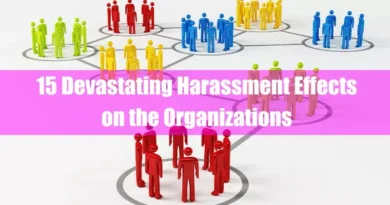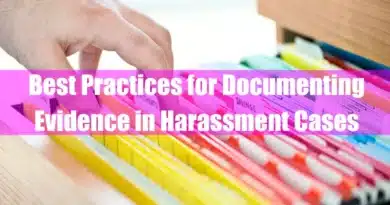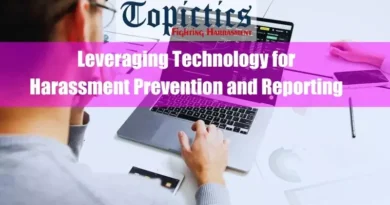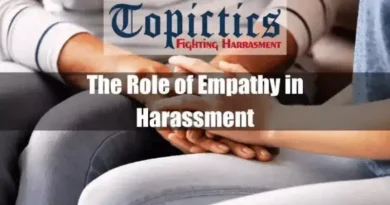Key Takeaways from the article “Addressing Power Imbalances and Potential Vulnerabilities”
- Power imbalances are real and have negative consequences. Social, economic, and political landscapes are uneven, with some groups holding more power than others. This can lead to exploitation, marginalization, and silencing of those with less power.
- We can address power imbalances through individual, community, and institutional efforts.
- Individuals can develop critical thinking, use their voices, and challenge unfair dynamics.
- Communities can build solidarity, advocate for change, and promote shared decision-making.
- Institutions can implement reforms like anti-discrimination laws, ethical data practices, and educational equity initiatives.
- Technology can be a double-edged sword. While it offers tools for empowerment, education, and community building, it can also be misused for manipulation and discrimination. Ethical considerations and responsible use are crucial.
- Addressing power imbalances is a complex and ongoing process. It requires continuous learning, critical thinking, and a commitment to justice. There will be challenges, but resources and support networks are available to help individuals and communities navigate them.
Additional Points:
- The article emphasizes the importance of intersectionality, recognizing that social identities overlap and create unique experiences of power imbalances.
- Global power dynamics also play a role, with historical factors like colonialism impacting economic disparities and resource access.
This article provides a valuable framework for understanding power imbalances and taking action to create a more equitable world. Remember, the information presented should be critically evaluated, and further research on specific topics might be necessary.
I. Introduction
Imagine society as a landscape, a vibrant tapestry woven with diverse threads representing individuals and groups. Ideally, this landscape would be flat, with everyone on equal footing. But reality bites hard – our social, economic, and political terrain is riddled with hills and valleys, peaks of power towering over crevasses of vulnerability. These imbalances, woven into the fabric of our lives, manifest in countless ways, shaping our opportunities, access, and ultimately, our very existence.
Power imbalances are a complex landscape, from entrenched inequalities like racism to ever-shifting digital dynamics. These create vulnerabilities where people are exploited and silenced. Ignoring them is like walking a treacherous path blindfolded. We must map these vulnerabilities, empower individuals, and work together to reshape this landscape – not just navigate it. This ongoing climb requires building a society where power lifts everyone, not isolating them.
II. Identifying and Analyzing Power Imbalances
A. Unearthing the Hidden Cracks in the Foundation
Before building a truly equitable society, we need to acknowledge the cracks in the foundation – the power imbalances that profoundly shape our lives. These imbalances come in various forms, each casting long shadows of vulnerability across our landscapes. Let’s shine a light on these “unseen fault lines” and understand how they impact us.
B. Mountains Carved from Inequality
Imagine towering peaks sculpted from prejudice and bias – that’s how structural power imbalances appear. These are deeply embedded inequalities ingrained in the very fabric of societies, based on factors like race, gender, class, caste, ability, and sexual orientation. Think systemic racism, entrenched sexism, or the widening chasm between the privileged and the marginalized. These “mountains” aren’t mere roadblocks; they dictate access to education, healthcare, housing, and even the fundamental right to be heard and valued.
Related articles:
- Fair Housing Act (FHA) of 1968
- Explaining National Origin-Based Quid Pro Quo Harassment
- Explaining Sex or Gender-Based Quid Pro Quo Harassment
- Explaining Age-Oriented Quid Pro Quo Harassment
- Explaining Color-oriented Quid Pro Quo Harassment
C. Shifting Sands of Interpersonal Dynamics
But power isn’t just a grand spectacle on national stages. It also dances a delicate tango within our everyday relationships. Think employer-employee, teacher-student, or even parent-child. In these microcosms, power balances can shift like quicksand, leaving some standing tall while others struggle to keep their footing. Understanding these interpersonal power plays, how they evolve, and the tactics used to maintain or challenge them is crucial to navigating the social landscapes of our daily lives.
D. Glittering Spires of the Digital World
Our virtual world isn’t immune to power imbalances either. In the digital realm, towering data algorithms, opaque corporate policies, and the ever-hungry social media giants cast their own brand of shadows. Algorithms can decide who gets seen and heard, data collection practices can leave us vulnerable to manipulation and discrimination, and online platforms can become echo chambers for the powerful while silencing marginalized voices. Recognizing these “digital spires” and their impact on our online lives is key to ensuring equitable access and participation in the ever-expanding digital terrain.
By mapping these diverse power imbalances, we gain a crucial advantage. We see the hidden contours of the landscape, anticipate the treacherous power dynamics, and begin to chart paths toward creating a more level playing field.
III. Assessing Potential Vulnerabilities

We’ve identified the towering peaks and shifting sands of power imbalances, but their true impact goes beyond uneven terrain. These imbalances cast long shadows of vulnerability, exposing individuals and communities to various forms of harm and injustice. Let’s explore the dark corners where these vulnerabilities lurk, understanding how they threaten our well-being and hinder our potential.
A. The Grim Harvest of Exploitation and Abuse
Where power imbalances create fertile ground, exploitation and abuse take root. Think of employers exploiting cheap labor, intimate partners manipulating emotional needs, or online predators preying on vulnerabilities. These abuses, fueled by unequal power dynamics, can manifest in physical, emotional, and financial forms, leaving lasting scars on individuals and communities. Recognizing the warning signs of exploitation and building effective support systems are crucial to breaking free from these cycles of harm.
B. The Thorns of Marginalization and Discrimination
When power imbalances weave their way into the societal fabric, certain groups and individuals find themselves pushed to the periphery, experiencing marginalization and discrimination. Think of racial profiling, exclusion from decision-making processes, or limited access to resources based on identity. These experiences of being “othered” can erode self-esteem, limit opportunities, and perpetuate cycles of disadvantage. Combating marginalization requires dismantling discriminatory structures, advocating for inclusive practices, and amplifying marginalized voices.
C. The Muffled Voices of Silencing and Disempowerment
Power imbalances often act as silencers, stifling voices and stripping individuals of their ability to make choices and control their lives. Think of silencing dissent in authoritarian regimes, gaslighting in abusive relationships, or digital platforms censoring content. These experiences of voicelessness can lead to feelings of isolation, powerlessness, and even physical safety risks. Rekindling silenced voices requires creating safe spaces for expression, empowering individuals to advocate for themselves, and dismantling structures perpetuating voicelessness.
By shining a light on these vulnerabilities, we move beyond recognizing power imbalances to understanding their tangible consequences. We see the pain inflicted by exploitation, the barriers raised by marginalization, and the silencing effect of disempowerment.
Related articles:
- Victims of Quid Pro Quo Harassment: 27 People at High Risk.
- 26 Potential Perpetrators of Quid Pro Quo Harassment
IV. Addressing Power Imbalances and Mitigating Vulnerabilities

We’ve charted the uneven terrain of power imbalances and identified the shadows of vulnerability cast by them. Now, it’s time to equip ourselves with tools and strategies to build a bridge over these obstacles, forging a path toward a more equitable and just society. This section delves into various approaches to address power imbalances and empower individuals and communities.
A. Individual Strategies
Empowerment starts within. Cultivating individual strategies to recognize and challenge power dynamics in our daily lives is the first step in creating change. Here are some ways to empower ourselves:
1. Building Critical Thinking and Awareness
- Questioning the status quo: Don’t blindly accept established power structures. Ask yourself why certain inequalities exist and how they impact you and others.
- Deconstructing biases: We all carry unconscious biases. Actively learn and challenge your own biases to avoid perpetuating harmful power dynamics.
- Developing healthy boundaries: Setting and enforcing healthy boundaries in personal and professional relationships ensures you control your interactions and prevent exploitation.
2. Embracing Self-Advocacy and Voice
- Speaking up for yourself and others: Don’t be afraid to voice your concerns and opinions, especially when confronted with injustice. Advocate for yourself and others facing inequities.
- Building communication skills: Learn to communicate effectively and assertively to express your needs and desires clearly and confidently.
- Seeking support networks: Surround yourself with supportive individuals who encourage your voice and empower you to stand your ground.
3. Taking Proactive Measures
- Educating yourself: Actively seek knowledge about power dynamics, social justice issues, and strategies for addressing them.
- Engaging in critical self-reflection: Examine your own role in upholding or challenging power imbalances and identify areas where you can contribute to positive change.
- Supporting social justice initiatives: Join forces with organizations and movements working to dismantle unequal power structures and promote equity.
Remember: Individual empowerment is a lifelong journey. By continuously strengthening our critical thinking, developing our voices, and taking proactive measures, we can become changemakers within our own spheres of influence.
While individual efforts like self-awareness and advocacy are crucial, tackling deeply rooted power imbalances often requires systemic change. Individual strategies might have limitations, as certain situations necessitate collective action or institutional reforms beyond a single person’s influence.
Related article:
- Ultimate Bystander Intervention Training (BIT)
- How to Provide Anti-harassment Training in the Workplace
- How to Provide Anti-harassment Training in Schools
B. Community-Based Approaches
Individual actions are powerful, but collective action holds the potential to truly reshape the landscape. Community-based approaches allow us to unite as a collective force against power imbalances.
1. Cultivating Solidarity and Shared Power
- Building bridges across differences: Fostering understanding and solidarity between diverse groups strengthens the fight against common oppressors.
- Creating support networks and safe spaces: Community-based support systems provide valuable resources and empower individuals facing vulnerabilities.
- Sharing knowledge and skills: Collective learning and skill-sharing within communities allows everyone to contribute their strengths and build collective power.
2. Mobilizing for Change
- Organizing and campaigning: Form coalitions and advocacy groups to raise awareness about specific power imbalances and push for systemic changes.
- Engaging in peaceful protests and demonstrations: Collective action can draw attention to injustices and demand accountability from those in power.
- Utilizing participatory action research: Community-driven research empowers individuals to identify and address local issues while generating valuable data for broader advocacy.
3. Fostering Shared Decision-Making and Resource Distribution
- Promoting community-based governance models: Decentralized decision-making ensures communities have a say in issues that affect them.
- Advocating for equitable resource distribution: Ensuring equal access to resources like education, healthcare, and economic opportunities creates a more just society.
- Supporting alternative economies: Building community-supported businesses and initiatives fosters greater economic power and autonomy within communities.
Remember: Community-based approaches require active participation, open communication, and shared leadership. By harnessing the collective power of individuals, communities can become agents of transformative change.
V. Institutional Reforms and Technological Solutions
Individual actions and community-based efforts lay the foundation for change, but tackling deeply entrenched power imbalances often requires systemic interventions. This section explores two crucial avenues for reform: institutional reforms and technological solutions.
A. Institutional Reforms
Institutions, from governments to corporations and educational systems, wield immense power in shaping our lives. Reforming these institutions to address existing power imbalances and promote equity is essential for sustainable change.
1. Policy and Legal Frameworks:
- Enacting anti-discrimination legislation: Laws prohibiting discrimination based on race, gender, sexual orientation, and other factors create a legal framework for challenging power imbalances.
- Promoting affirmative action programs: Policies that favor historically disadvantaged groups can help redress past injustices and level the playing field.
- Strengthening accountability mechanisms: Ensuring institutions are held accountable for discriminatory practices and policies encourages fair treatment and prevents abuse of power.
2. Reimagining Governance Structures:
- Decentralizing power: Shifting power from centralized authorities to local communities fosters democratic participation and empowers individuals to have a say in decisions that affect them.
- Promoting transparency and open access to information: Increased transparency within institutions allows for public scrutiny and helps prevent the misuse of power.
- Engaging in participatory decision-making: Including diverse voices in policy and program development ensures solutions are tailored to the needs of the communities they impact.
3. Realigning Educational Systems:
- Integrating critical thinking and social justice education: Educating students about power dynamics, inequality, and strategies for change fosters responsible citizens who can contribute to a more just society.
- Diversifying curriculum and faculty: Ensuring representation of historically marginalized groups in educational materials and leadership creates a more inclusive and equitable learning environment.
- Addressing unconscious bias and discriminatory practices within institutions: Implementing measures to identify and dismantle bias within educational systems promotes equal opportunities for all students.
Remember: Institutional reforms are complex and necessitate ongoing dialogue, advocacy, and public pressure. However, persistent efforts to reshape the rules of the game within institutions can create a ripple effect, paving the way for a more equitable society.
B. Technological Solutions
The digital age presents both new challenges and opportunities in addressing power imbalances. Technological solutions can be leveraged to empower individuals, mitigate vulnerabilities, and even hold institutions accountable.
1. Promoting Digital Literacy and Access:
- Bridging the digital divide: Ensuring equitable access to technology and the internet enables everyone to participate in the digital world and leverage its potential for empowerment.
- Developing digital literacy programs: Equipping individuals with the skills to navigate the digital landscape safely and critically, protecting themselves from manipulation and discrimination.
- Supporting community-driven technology initiatives: Empowering communities to develop and utilize technology solutions tailored to their specific needs and challenges.
2. Designing Equitable Algorithms and Data Practices:
- Utilizing algorithmic transparency tools: Demystifying the algorithms used by platforms and institutions that significantly impact individual lives fosters trust and accountability.
- Developing ethical frameworks for data collection and use: Establishing clear guidelines for data collection, storage, and analysis prevents discriminatory practices and protects individual privacy.
- Democratizing data ownership and control: Individuals should have greater control over their own data and how it is used, preventing exploitation and manipulation.
3. Utilizing Technology for Advocacy and Accountability:
- Crowdsourcing platforms and social media: These tools can raise awareness about injustices, mobilize support for social movements, and hold institutions accountable for their actions.
- Open-source technology and citizen journalism: Empowering individuals to document and share information promotes transparency and can expose unfair practices within institutions.
- Leveraging technology for community organizing and communication: Digital tools can facilitate communication, collaboration, and resource sharing within communities, strengthening their power to advocate for change.
Remember: Technology is a double-edged sword. While it can exacerbate existing power imbalances, it also holds immense potential for empowering individuals, fostering collective action, and promoting transparency. Harnessing technology responsibly and ethically is crucial in shaping a more equitable digital future.
It’s important to acknowledge the inherent complexities. Institutional change is a marathon, requiring ongoing efforts to overcome resistance and navigate intricate political landscapes. Similarly, technology’s potential for good can be overshadowed by misuse. Unethical data practices and biased algorithms can perpetuate discrimination, while social media can be a breeding ground for manipulation. To create lasting change, we must address these challenges head-on.
VI. Important Detours to Consider
A. Intersectionality: Don’t Judge a Book by One Cover:
Imagine race, gender, class, and all the other pieces of who we are as puzzle pieces. Put them together, and you get a unique picture shaped by how they overlap. A Black transgender woman, for example, faces a different struggle than a white man because these pieces combine to create a complex web of vulnerabilities. That’s intersectionality – understanding that power imbalances aren’t one-size-fits-all. We must build coalitions that embrace diversity and fight for everyone, not just individual pieces of the puzzle.
B. Zooming Out: Power Plays on the Global Stage:
Power imbalances aren’t just neighborhood brawls; they’re global gladiatorial games. Colonial echoes still play loud, shaping economic disparities and who gets access to the world’s goodies. Resource grabs, environmental injustice, and migration crises – these are all chapters in the story of global power imbalances. International organizations try to referee, but it’s a messy game with both wins and frustrating deadlocks. Recognizing this bigger picture helps us understand how things connect and where to focus our energy.
C. Solutions with Side Effects:
We all want quick fixes, but dismantling power imbalances is like climbing Mount Everest in flip-flops. Affirmative action, for example, aims to level the playing field, but some argue it creates new inequalities. Technology can be a powerful tool for good, but algorithms can become biased bullies. Even individual actions, like speaking up, can have unintended consequences. The key is to be critical, think long-term, and keep learning. There’s no magic bullet, but we can make progress with careful aim.
VII. A Call to Action – Building a Just Landscape Together
We’ve charted the uneven terrain of power, unearthed vulnerabilities lurking in its shadows, and explored pathways for individual, community, and institutional reform. Now, it’s time to transform knowledge into action. This is not a spectator sport; each of us has a role to play in building a society where power balances tilt toward equity and justice.
Firstly, harness the power within. Strengthen your critical thinking, amplify your voice, and actively challenge unfair power dynamics in everyday interactions. Seek opportunities to uplift the marginalized, support community-driven initiatives, and hold institutions accountable for their actions. Remember, individual acts of courage, when woven together, form a tapestry of transformative change.
Secondly, join the collective chorus. Connect with those who share your vision of a just society, build bridges across differences, and amplify marginalized voices. Engage in collective action, support social movements, and advocate for policies dismantling power imbalances and fostering inclusivity. Remember, unity and collective action are the levers that move mountains and reshape the power landscape.
Finally, embrace the power of innovation. Advocate for equitable access to technology, push for ethical data practices, and leverage digital tools for advocacy and community building. Remember, technology can be a force for good; wield it responsibly and creatively to empower individuals, strengthen communities, and hold power accountable.
The journey towards a just world is ongoing, demanding continuous self-reflection, relentless advocacy, and unwavering commitment. Let us rise as a collective force, wielding knowledge, action, and innovation as our tools. Together, we can build a landscape where power imbalances crumble, vulnerabilities fade, and equity stands as the cornerstone of our shared future.
It’s important to acknowledge the realities of activism. Fear of retaliation, limited resources, and maintaining long-term commitment can all be hurdles to justice. Don’t be discouraged – there are resources and support networks available to help you navigate these challenges. Websites like Acronym for National Conference of Community and Justice offer resources and training on bystander intervention, community organizing, and navigating conflict. Remember, even small actions can contribute to positive change.
Also, read:
- 20 Quid Pro Quo Harassment Examples and How to Stop Them
- How to Prove Quid Pro Quo Harassment: 13 Powerful Evidences
- Quid Pro Quo Harassment vs. Hostile Work Environment Harassment
- Is Quid Pro Quo Illegal? 21 Accused Celebrities Examples
- Explaining Quid Pro Quo Harassment Under Title IX
- Quid Pro Quo Harassment: What It Is? Know Everything









